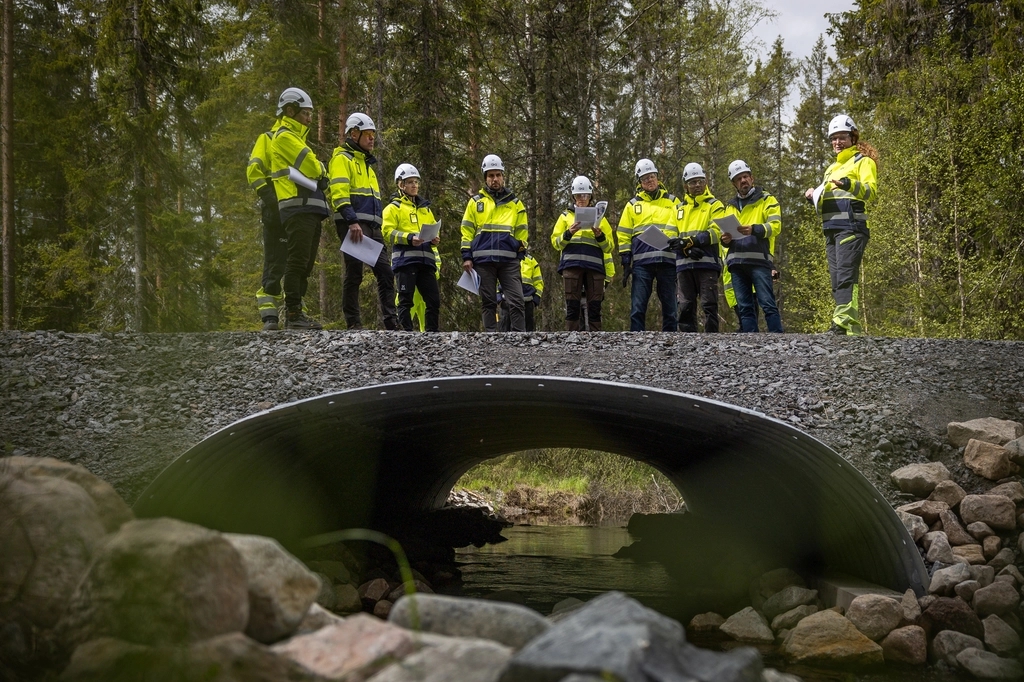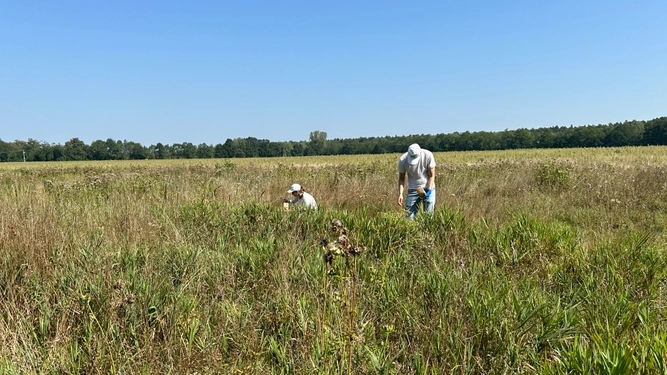Culverts designed for climate resilience and biodiversity
Efforts to reverse biodiversity loss and increase climate resilience have led to OX2 focusing on practical action across multiple project sites: reviewing the location, dimension and design of culverts.
Accessibility and roads are important aspects to assess when designing the layout of a project. Already existing roads are preferably used, avoiding further intrusion in nature, but extended or adapted where needed. New roads are usually required as well to ensure access to all wind turbines or solar panels. Culverts are used to allow flow of water under roads, which is key to managing surface runoff from rain.
Physical risks from extreme weather events
As a result of climate change, rainfall intensifies in terms of both magnitude and duration. This is because warmer temperatures accelerate evaporation, and a warmer atmosphere can hold more water vapor. In short, a warmer Earth is also a wetter Earth. Note that this is not evenly distributed as climate change exacerbates extreme weather – both skyfall and drought.
Intensified rain can damage roads, which could imply limiting access to parts of the project until repairs could be made. Depending on the project phase, this could have implications for electricity production or construction delays. Culverts are key to managing these risks, allowing water to flow under the roads, whereby physical damage can be avoided. To further mitigate the risk associated with future rain, continued warming is taken into account when sizing the drums.
Ecological function
Culverts have an ecological function as they can enable the movement of water, fish/amphibian migration, reconnect to stream systems, and maintain water quality. As part of OX2’s biodiversity efforts, the design of culverts has been adapted to the needs of the local ecosystems. In Åmot-Lingo and Tönsen wind farms, for example, a culvert has adapted to adjust the height of the downstream end. Another example was in the Ånglarna wind farm where a culvert that blocked migratory routes was replaced by a larger vaulted culvert, allowing both fish, amphibians, and larger volumes of water to flow through.

The OX2 Leadership Team's site visit to Ånglarna, in spring 2025.
Effective measure
By serving multiple functions, adapted culverts are an example of an effective measure, both ecologically and financially. They serve as a way to manage the risk of physical risks exacerbated by climate change whilst contributing to OX2’s biodiversity efforts.

